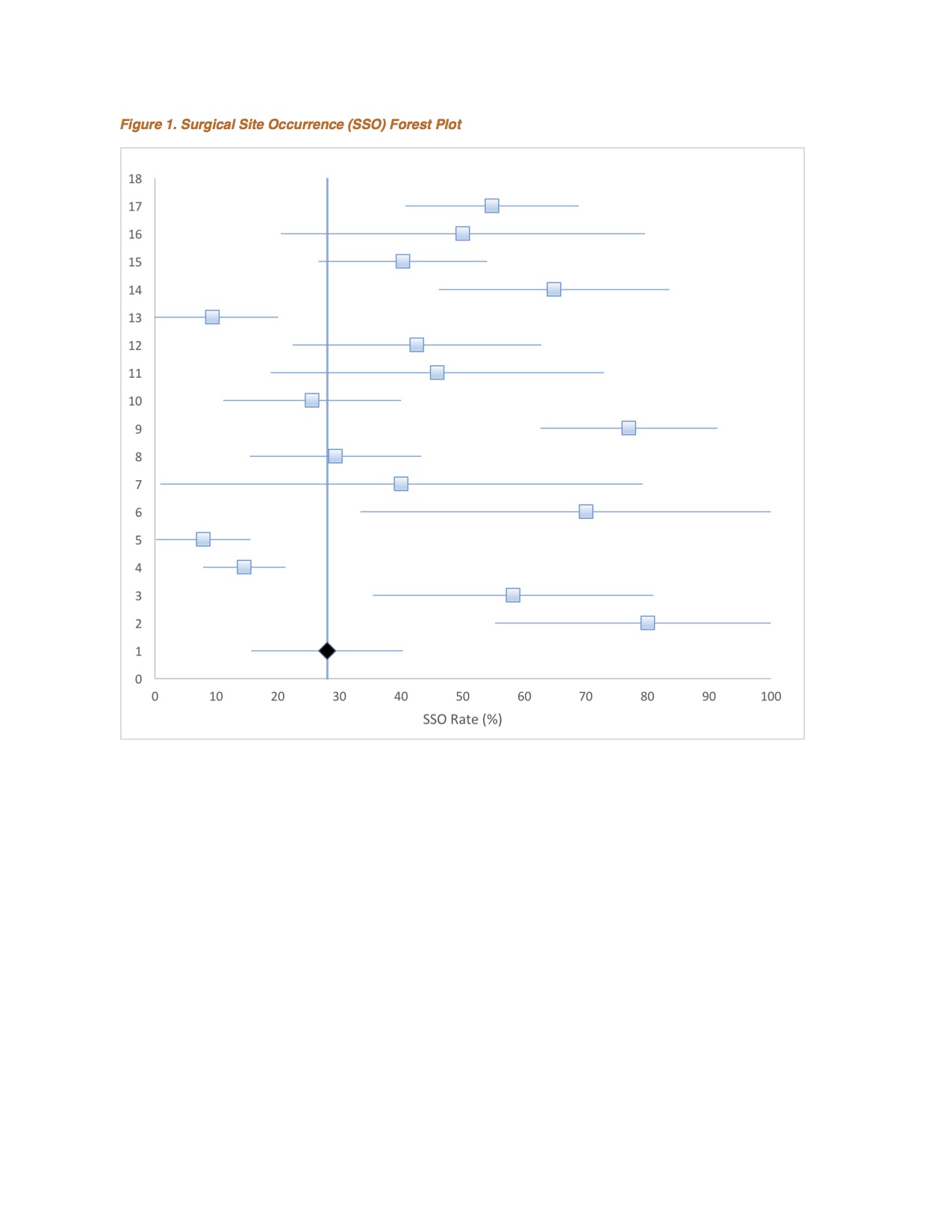Simultaneous Ventral Hernia Repair and Panniculectomy: A Systematic Review and Meta-Analysis of Outcomes
Kareem M. Termanini, MS1, Michael Sosin, MD2, Cara K. Black, BA1, Vishal D. Thanik, MD2, Pierre B. Saadeh, MD2, Jamie P. Levine, MD2.
1Georgetown University School of Medicine, Washington, DC, USA, 2NYU Langone Health, New York, NY, USA.
Background: Simultaneous ventral hernia repair and panniculectomy (SVHRP) is a procedure that is more commonly being offered to patients with excess skin and subcutaneous tissue in need of a ventral hernia repair. However, concerns for developing surgical site complications and uncertainty regarding the durability of repair may deter surgeons from performing a SVHRP. Outcomes vary within the literature of SVHRP. The purpose of this study was to assess the durability, complication profile, ad safety of SVHRP.
Methods: The current literature on SVHRP was queried using MEDLINE, PubMed and Cochrane databases. Predefined selection criteria yielded 76 relevant titles were identified and 16 articles were ultimately included for analysis. A meta-analysis random effects model was used to analyze primary outcomes identified as surgical site occurrence and hernia recurrence. Secondary outcomes including techniques employed and systemic complications were analyzed via a weighted mean pooled analysis from the systematically collected data.
Results: This study captured 917 patients that underwent a SVHRP with a mean age of 52.2 years (±7.02), BMI of 36.1 (±5.83), and pannus weight of 3.18 kg. The surgical site occurrence rate was 27.9% (95% CI 15.6-40.2, I2 = 70.9%) and a hernia recurrence rate of 4.9% (95% CI 2.4-7.3, I2 =70.1%), Figure 1, with a mean follow up of 17.8 months (±7.7 months). Specific to SSO, the most common complication was a superficial surgical site infection (15.8%) and seroma formation (11.2%). Systemic complications were less common (7.8%) with a thromboemobolic event rate of 1.2%. Overall mortality rate was .43% (Table 1).
Conclusion: Performing an SVHRP is associated with a high rate of SSO but SSI seems to be less prominent than may be anticipated. The low hernia recurrence rate and the safety of this procedure supports its current implementation in abdominal wall reconstruction.
Table 1. Complication Rates by Study
| First Author, Year | SSI (%) | Skin Dehiscence (%) | Delayed Wound Healing/Skin Necrosis (%) | Hematoma/ Seroma (%) | Hernia Recurrence (%) | Non-Surgical Site Complications (%) | DVT/PE (%) |
| McNichols, 2018 | 36.8 | 25.5 | 41.5 | 22.6 | 20.1 | 16.0 | 2.8 |
| Mazzocchi, 2011 | 13.5 | N/A | N/A | 18.1 | 4.5 | 0 | 0 |
| Robertson, 2003 | 18.3 | N/A | 14.6 | 4.0 | 9.8 | 0 | 0 |
| Saxe, 2007 | N/A | N/A | N/A | 0 | N/A | 0 | N/A |
| Cheesborough, 2015 | 0 | 0 | 3.13 | 6.3 | 0 | 6.3 | 0 |
| Shermak, 2006 | 10.0 | N/A | 20.0 | 12.5 | 2.5 | 5 | 0 |
| Dumanian, 2005 | 13.0 | 12.5 | N/A | 8.0 | 16.7 | 8.3 | 2.5 |
| Berry, 2007 | 16.0 | 6.0 | 19.2 | 2.0 | 8 | 53.0 | 0 |
| Zemlyak, 2012 | 28.4 | 28.4 | N/A | 20.6 | N/A | N/A | 13.0 |
| Espinosa-De-Los-Monteros, 2016 | 5.2 | 8.6 | 5.2 | 5.2 | 5.2 | 10.3 | 0 |
| Okusanya, 2014 | 30.0 | 10.0 | 0 | 0 | 10.0 | 10.0 | 10.0 |
| Harth, 2011 | 30.0 | 40.0 | N/A | 0 | 10.0 | 80.0 | N/A |
| Moreno-Egea, 2016 | 1.9 | 0 | 0 | 5.9 | 0 | 2.0 | 0 |
| Bang, 1997 | 4.0 | N/A | 8.1 | 2.4 | 4.8 | 0 | 0 |
| Warren, 2015 | 16.3 | 2.3 | 21.0 | 16.3 | 11.6 | N/A | N/A |
| Downey, 2005 | 18.0 | 22.0 | 0 | 40.0 | 0 | N/A | N/A |
Figure 1. Surgical Site Occurrence (SSO) Forest Plot

Back to 2018 Posters




